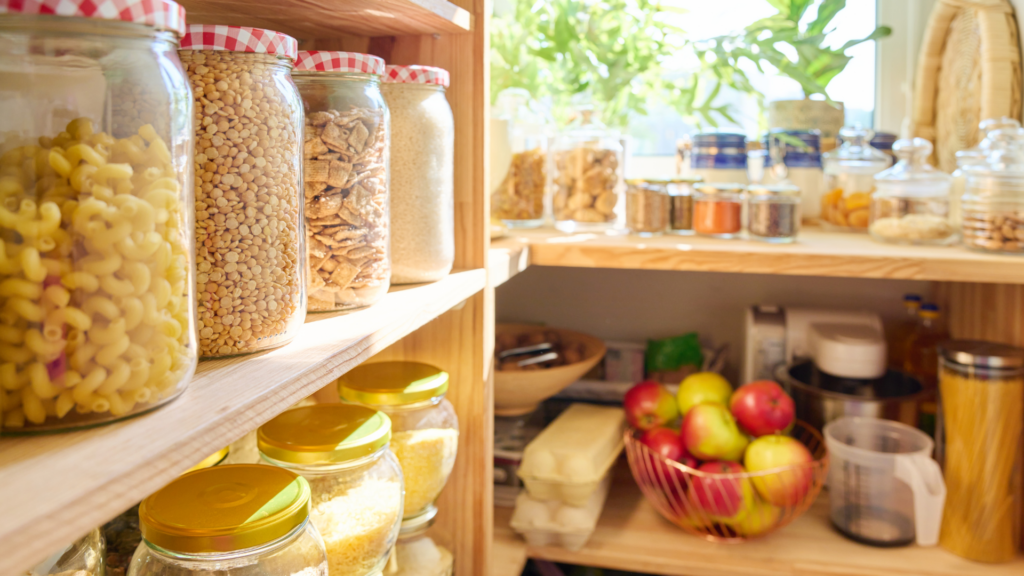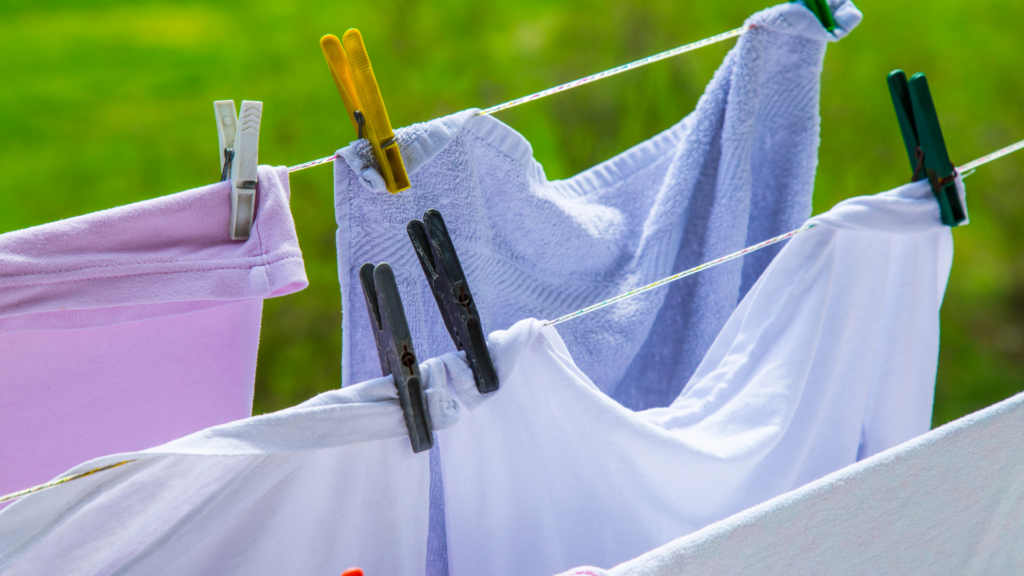50 Frugal Habits I Learned from My Mom (and Still Use)
Growing up, I watched my mom stretch every dollar as if it were made of elastic. At the time, some of her habits seemed old-fashioned or even embarrassing. But now, as I navigate my own household budget and watch prices climb everywhere, I realize she was actually a financial genius in disguise.

These aren’t extreme penny-pinching tactics that make life miserable. They’re smart, practical habits that save real money without sacrificing quality of life. The best part? Most of them are so simple that you can start using them today.
Here are 50 time-tested frugal habits that have stood the test of time and helped countless families build financial security.
Food and Kitchen Habits
1. Plan Weekly Meals
Planning your meals around what’s on sale and what you already have at home can cut your grocery bill by 20-30%. Spend 15 minutes each week checking store flyers and taking inventory of your pantry before making your shopping list.
2. Cook from Scratch
Pre-packaged foods often cost three to four times more than making the same dish at home. Learning basic cooking skills pays off quickly when you see how much you save compared to takeout and convenience foods.
3. Use Leftovers Creatively
Transform yesterday’s roast chicken into today’s chicken salad or soup. Leftover vegetables become stir-fry ingredients, and extra rice turns into fried rice. This habit alone can stretch your food budget by 15-20%.
4. Freeze Bread and Baked Goods
Store half a loaf of bread or extra baked goods in the freezer to prevent waste. Frozen bread tastes just as good when toasted, and you’ll never throw away moldy bread again.
5. Buy in Bulk
Purchase staples like rice, beans, oats, and flour in bulk for significant savings. Just make sure you have proper storage containers and will actually use everything before it expires.
6. Compare Prices
Check unit prices (cost per ounce or pound) rather than package prices. Sometimes, the smaller size is actually a better deal, and generic brands often offer savings of 20-40% over name brands.

7. Use Coupons Strategically
Don’t just clip any coupon—focus on products you actually use. Stack manufacturer coupons with store sales for maximum savings, but never buy something just because you have a coupon.
8. Preserve Food
Learn basic food preservation techniques, such as freezing, canning, or dehydrating. When fruits and vegetables are in season and cheap, preserve them for later use throughout the year.
9. Save Bacon Grease and Cooking Fats
Store rendered bacon fat or other cooking fats in the refrigerator to use for cooking. They add incredible flavor to vegetables and eliminate the need to buy additional cooking oils.
10. Make Simple Snacks
Homemade popcorn costs pennies compared to packaged snacks. Fresh fruit, homemade cookies, or even simple crackers and cheese always beat expensive, processed snack foods.
11. Store Food Properly
Discover how to store various foods to maintain their maximum freshness. Keep bananas separate from other fruits, store potatoes in dark places, and use airtight containers for dry goods to prevent spoilage.

12. Stick to Classic Recipes
Tried-and-true recipes using basic ingredients are generally more budget-friendly than trendy dishes that require specialty items. Master a few reliable recipes that your family loves.
13. Batch Cook
Prepare large quantities of meals and freeze them in portions for later use. This saves time and money while ensuring you always have a home-cooked meal ready, rather than ordering takeout.
14. Make Coffee at Home
Brewing coffee at home costs about 25 cents per cup, compared to $3-$ 5 at coffee shops. Even investing in a good coffee maker and high-quality beans can save hundreds of dollars annually.
15. Limit Eating Out
Reserve restaurant meals for special occasions rather than convenience. Even one less restaurant meal per week can save a family $200-$ 400 per month.
Household and Utilities
16. Repurpose Containers
Glass jars become storage containers, yogurt tubs hold leftovers, and coffee cans organize workshop supplies. Before throwing away any container, consider if it could serve another purpose.
17. Hang Clothes to Dry
Air-drying clothes saves energy costs and extends the lifespan of clothing. Even drying just half your laundry this way can reduce your electric bill by $10-15 per month.

18. Lower the Thermostat
Keep your thermostat 2-3 degrees lower in winter and higher in summer. Layer up with sweaters and blankets in cold weather—you’ll barely notice the temperature difference but will see the savings on your energy bill.
19. Turn Off Lights and Appliances
Make it a habit to switch off lights when leaving rooms and unplug appliances when not in use. Small electronics in standby mode can add $ 100 or more to your annual electricity bill.
20. Use Only What You Need
A little soap goes a long way. Most people use 2-3 times more laundry detergent, dish soap, and cleaning products than they actually need. Read the instructions and measure properly.
21. Make Your Own Cleaning Products
White vinegar, baking soda, and lemon can clean almost anything in your house. These natural cleaners cost pennies compared to specialized cleaning products and work just as well.
22. Use Every Last Drop
Cut open tubes to scrape out the last bit of toothpaste or lotion. Add a little water to nearly empty shampoo bottles to get several more uses. These small actions add up over time.
23. Save and Reuse Gift Wrap
Carefully unwrap gifts and save paper, ribbons, and gift bags for future use. High-quality wrapping materials can be reused multiple times if handled with care.
24. Use Cloth Napkins
Replace disposable paper napkins with washable cloth ones. The initial investment pays off quickly, and cloth napkins actually make meals feel more special.

25. Avoid Single-Use Items
Choose reusable options over disposable ones whenever possible. Microfiber cloths replace paper towels, and reusable water bottles eliminate the need for single-use plastic bottles.
26. Save on Water
Take shorter showers, fix leaky faucets promptly, and collect rainwater for plants. Making small changes in your water usage can reduce your water bill by 10-20%.
27. Limit Heating and Cooling
Use fans instead of air conditioning when possible, open windows for natural cooling, and close curtains to block heat in summer. Work with your home’s natural temperature patterns.
Shopping and Spending
28. Stick to a Shopping List
Make a detailed list before shopping and stick to it. Impulse purchases can add 20-30% to your grocery bill, and having a list keeps you focused on what you actually need.
29. Use Cash for Budgeting
Withdraw a set amount of cash for weekly expenses like groceries and entertainment. When the cash is gone, you’re done spending for the week. This physical limitation prevents overspending.

30. Avoid Credit Card Debt
Pay with cash or debit cards to avoid interest charges and fees. If you must use credit cards, pay the full balance every month to avoid costly interest payments.
31. Buy Quality, Not Quantity
Invest in well-made items that last longer, especially for things you use daily, like shoes, kitchen tools, or bedding. Quality items often cost less per year of use than cheap replacements.
32. Shop Secondhand First
Check thrift stores, consignment shops, and yard sales before buying new items. You can find quality clothing, furniture, and household items for 70-90% less than retail prices.
33. Take Advantage of Discounts
Always ask about senior, student, military, or membership discounts. Many businesses offer discounts that aren’t advertised, so it’s never a bad idea to ask politely.
34. Share Meals When Eating Out
Restaurant portions are often large enough for two people to share. Sharing an entree or taking home leftovers for tomorrow’s lunch maximizes the value of your restaurant dollars.
35. Avoid Trendy Purchases
Don’t chase the latest gadgets, fashion trends, or home decor fads. Buy what you need based on function rather than what’s currently popular. Trends change, but quality basics never go out of style.
DIY and Maintenance
36. Mend and Repair
Learn basic repair skills for clothing, shoes, and household items. A simple sewing kit and some basic tools can extend the life of your belongings by years.
37. DIY Home Repairs
Master basic maintenance tasks like unclogging drains, painting walls, or fixing squeaky hinges. YouTube tutorials can teach you skills that save hundreds in professional service calls.

38. Make Do and Mend
Before buying something new, consider if you can repair, modify, or repurpose something you already own. Creativity often yields better solutions than those found in store-bought items.
39. Recycle and Upcycle
Turn old t-shirts into cleaning rags, use glass jars for organization, or transform furniture with paint. One person’s trash can become another’s treasure with a little imagination.
40. Grow a Garden
Even a small herb garden on a windowsill can save money and provide fresher, more flavorful ingredients. Tomatoes, herbs, and lettuce are particularly easy to grow and expensive to buy.
Transportation and Efficiency
41. Walk or Use Public Transport
Drive less by combining errands, walking to nearby destinations, or using public transportation. Every mile you don’t drive saves money on gas, maintenance, and vehicle wear.
42. Plan Errands Efficiently
Group errands together and plan routes to minimize the amount of driving. One well-planned trip can replace three separate outings, saving both time and fuel costs.
43. Use Public Libraries
Libraries offer free books, movies, internet access, and even tools in some communities. Many also host free events and classes that provide entertainment without the cost.

44. Share Resources
Borrow or trade tools, books, and equipment with neighbors and friends. Items used occasionally don’t need to be owned—they just need to be accessible when needed.
Mindset and Lifestyle
45. Practice Gratitude
Appreciate what you already have instead of constantly wanting more. Gratitude naturally reduces the urge to make unnecessary purchases and helps you find contentment with less.
46. Avoid Processed Foods
Whole foods, such as fruits, vegetables, grains, and basic proteins, are usually less expensive and healthier than their processed alternatives. Simple ingredients stretch further and offer better nutrition.
47. Make Gifts by Hand
Homemade gifts, such as baked goods, crafts, or photo albums, often mean more than store-bought items. They show thoughtfulness while saving money, and recipients usually treasure them more.

48. Reuse Paper
Use the blank side of printed paper for notes, shopping lists, or scratch paper. This simple habit can make a ream of paper last twice as long.
49. Drink Water at Home
Skip expensive sodas, juices, and specialty drinks in favor of water. Your health and wallet will both benefit from this simple switch.
50. Teach and Share Frugal Skills
Pass these habits on to your children, friends, and community. Teaching others reinforces your own good habits while helping build a culture of financial responsibility.
Final Thoughts
These 50 habits might seem simple, but their power lies in consistency and compound effects. When you implement several of them together, the savings multiply quickly. A dollar saved here and there adds up to hundreds or even thousands of dollars over time.
The beauty of these frugal habits is that they don’t require major lifestyle changes or sacrifices. Instead, they’re small adjustments that become second nature with practice. They teach you to be resourceful, creative, and mindful about spending—skills that serve you well in any economic climate.
Mom’s generation understood something we sometimes forget today: financial security comes from spending less than you earn and making the most of what you have. These habits aren’t about deprivation—they’re about freedom. The freedom that comes from knowing you can live well on less, build savings for the future, and weather financial storms with confidence.
Start with a few habits that appeal to you most, then gradually add others as they become routine. Before long, you’ll discover that frugal living isn’t about limiting yourself—it’s about making smart choices that give you more options and less financial stress.
Your future self will thank you for every small step you take today toward better financial habits. After all, the best time to plant a tree was 20 years ago. The second-best time is now.

